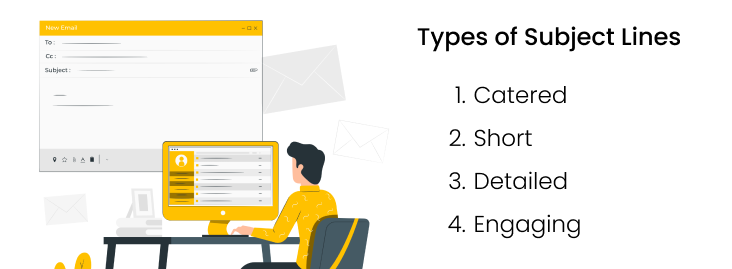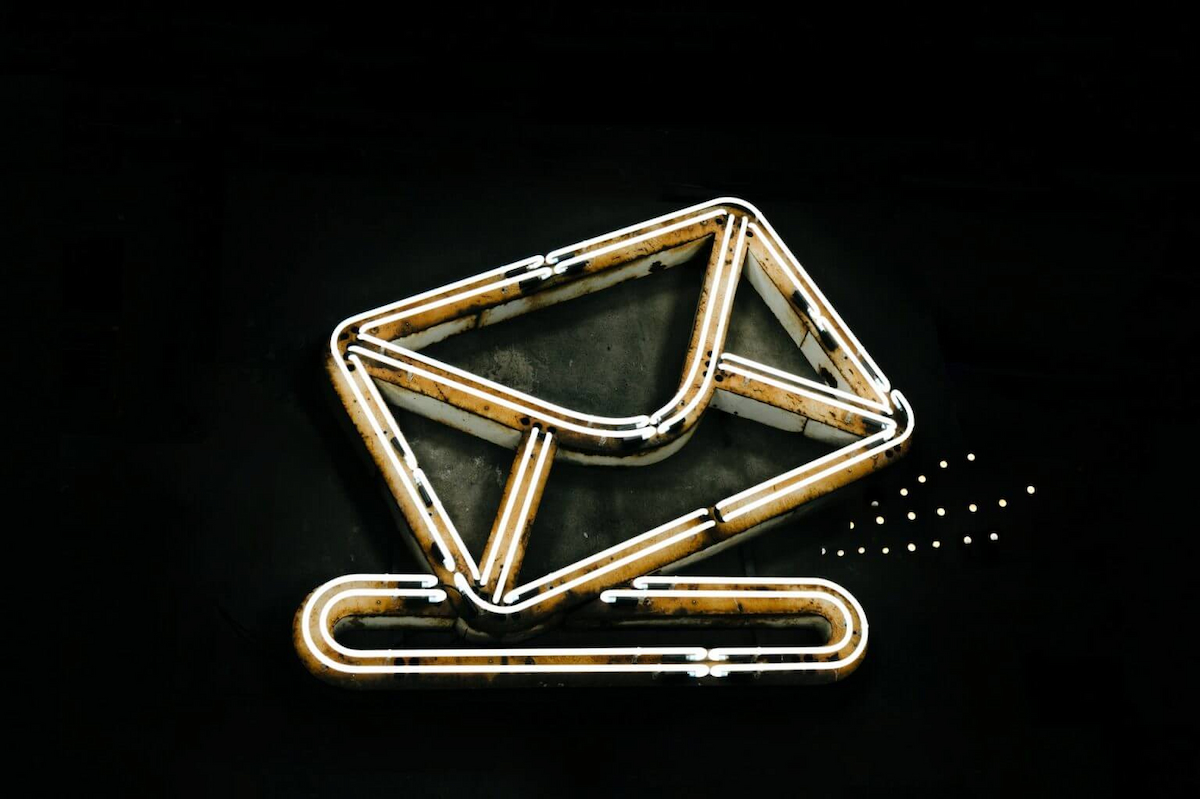You’ve been there, you’ve failed it, and you don’t want to do it again. Yes, writing a follow-up email takes both skill and knowledge.
Follow-up emails are a series of emails that correspond to actions performed by your customer. The type of email depends on that action. Creating a good follow-up email is a complex process that requires a certain degree of understanding of how people open their emails, how they view the information presented, and what things they might enjoy (or not).

When people say they worked hard to get a response, they aren’t lying. Today, when information is excess, encouraging email recipients to open a letter, let alone respond to it, takes draconian patience and real skill. However, there are ways to boost your odds of getting a response, and this is precisely what we will be discussing today.
From outlining the importance of knowing how to write follow-up emails to crafting unique messages to templates, there's a ton to cover, so let's not waste any time and dive into the world of good email follow-ups. P.S. We also prepared some follow-up email samples, so read the article until the end.
Why Are Follow-Up Emails So Important
Generally speaking, there are four reasons why successful follow-up emails are so important: they increase conversion, they build trust, they allow you to filter the audience, and finally, they can automate email marketing. Let’s take a look at each of these in detail.
- Conversion Increases. If you analyze how you respond to emails, you will probably notice a few things. You don't open emails when you are busy, you don't want to scroll through hundreds of messages, and you certainly don't want to waste time. Follow-up emails combat all of the above as they are a way to add value through assistance. After all, a fresh email is always at the top.
- Trust Building. One of the key aspects of follow-up emails is the fact that they can be used to build trust and good relationships with your customers. Whether outlining your mission or demonstrating your customer-centered approach, follow-up emails are perfect for such things.
- Audience Filtering. Another powerful characteristic of follow-up emails is that they allow you to divide people who don't care about your brand from those who want to communicate with you actively. Having this ability at your disposal will allow you to develop a more holistic approach to those customers who care.
- Marketing Automation. Now that you know the participating part of your audience, you can send out promotions on an automated basis. Doing so will most likely increase sales, as well as free up time.
There are other reasons why follow-up emails are so important. Take, for instance, your potential employer; letting them know about your intentions will show your commitment and enthusiasm, which is something your employer might value.
How to Write a Follow-up Email: 5 Easy Steps
Alright, now that we have the basics under the belt, let's take a moment and talk about how to do a follow-up email well. Typically, an email consists of a subject line, the message itself, and the closure part. That remains unchanged in a follow-up email. Your objective is to do the following:
- Define the purpose of the mail;
- Create a proper subject for the email;
- Open with a polite greeting and context;
- Engage the customer and encourage action;
- Plan your next move.
Let’s discuss each of these in detail.
Defining the Purpose of Your Follow-up Email
Unless you have a proper sales funnel, this entire step will involve a lot of determination work. You need to know precisely what the main purpose of the email is; otherwise, it is just nonsensical data. To put this into perspective, let's imagine you met this really cool software developer at a conference and would like to offer him a position at your company for an upcoming project, but the person went cold.
You need to spark his interest in the upcoming project and send him a cold email to build warm relationships and trust. This is what your effective email should be all about. Your key objective is to let them know exactly why they should join your company. In our particular case, sending out a leaflet or work description page might prove to be effective.
Creating a Subject Line
If your email subject line is generic, you are missing out on many opportunities. Your subject line is one of your strongest assets, as it provides a small glimpse of what the whole email is about. Generally, there are four core types of subject lines that you can use while creating your follow-up strategy.

Catered — If you know your audience, then there is no better subject line than the catered one. We suggest that you examine their demographic data, what kind of email client they use, and what device they use to view the message. Based on the info you've obtained, you will be able to identify what to write and, more importantly, how to write.
Short — Sometimes, keeping your subject line straight to the point is best. The golden standard is 7 words (roughly 41 characters long), so you should aim to hit the same mark. However, if you feel like you need more, feel free to do it, as it just might be what you need.
Detailed — Just as you don't like wasting time, your key demographic also doesn't like it. Make your subject line crystal clear, as it will determine whether your recipient will open the message in the first place.
Engaging — If possible, make your subject line at least a little engaging, but don't go overboard, as it might cast you in an unprofessional light. Worse yet, the native anti-spam system might discard your message.
Open with a Polite Greeting and Context
The opening of your email is no less important than the subject.
So, begin with a warm but professional greeting. This helps to set a respectful tone and shows that you value your customer's time and attention. Immediately after that, the best way to follow up on an email is to remind the customers of their previous interaction, purchase, or communication. They obviously need to recall the specifics of their engagement with your company and understand the context of the following email.
Engage the Customer and Encourage Action
Your next task is to truly engage the customer and motivate them to take action.
Start by highlighting the unique benefits they are enjoying from your product or service, reinforcing the value they've already received. Address any potential concerns they might have, showing that you're proactive and care about their experience. Guide them on the next steps, whether providing feedback, taking advantage of an exclusive offer, or exploring additional features. Be clear and direct about what you want them to do next, making it easy and enticing.
Wrap up with a compelling call to action that encourages them to respond or take the desired step, ensuring your follow-up is not just informative but also engaging and action-oriented.
Plan Your Next Move
Email marketing is all about persistence. If you see that your current email is left untouched, then you should come up with an organic way to write the next one. Make your entire message chain feel natural and aligned with your funnel plan.
Follow-up Email Templates
What good would this guide do if it didn't include any templates? We prepared seven email templates for you. Feel free to use or modify them to power up your email shenanigans.
Short Follow-up Email Template
Hi, [First Name],
I hope your weekend was amazing. I’m just checking in to see what your colleagues think about my recommendations. If I can help at all, let me know.
All the best,
[Your Name]
What is great about this template is that it is straight to the point. There is no water, no long introductions, no nothing. Just business and clarity of intentions—something that busy business people will appreciate.
CTA Follow-up Email Template
Hi [First Name],
We've noticed that you haven't responded even though [X] days have passed. We don't want to annoy you, so please reply with a number from the list that best describes your response.
- Please don’t bother me!
- Email me again in a month. Don't have time ATM.
- I’ll reply in a week or so.
Thanks!
What is great about this email is that it shows your prospects that you value their time and don't want to bug them for no reason. Another good thing about this email is that it already offers an easy way to respond, which might not be everyone's cup of coffee but is an option nonetheless.
Post-Event Follow-up Email Template
Dear [First Name],
What an event it was! I hope that you learned as much as you had fun.
We are positive that [increasing your sales objective] is your number one priority. So here are the [sales recommendations] we’ve discussed. If you feel like these are not enough, or maybe you need a more thorough look, I’m more than happy to spend the next 30 minutes discussing your questions.
I’m here to help, so don’t hesitate to drop me a message or two.
Best regards,
[Sales Representative]
This follow-up email is a good way to remind the person not only about the meeting but also why they attended the show in the first place. The fact that you didn't forget about recommendations is also a massive plus. And then there's the organic CTA, which is perhaps the hallmark of the entire message.
Follow-up Email Example After No Response
First, wait a few days after you’ve sent a previous email. We recommend waiting at least 3 days to avoid being annoying. Then, you can use the following template.
Hi [First Name],
We hope you are doing well. It went several days after our last reply, and we've still not received a response from you. We think you may be busy finding our offer in your inbox. So, maybe you would like to take a look again at what [your company's name] offers.
[A copy of non-responded letter]
We are waiting for your reply.
Best regards,
[Sales Representative]
Interview Follow-up Email Template
Hi [Interviewer's Name],
I hope this message finds you well. I wanted to express my gratitude for the opportunity to interview for the [Job Position] role at [Company Name] last [Day of the Week]. I am very excited about the possibility of joining your team and contributing to [specific project or company goal].
Please let me know if you need any additional information or if there are any updates on the hiring process. I look forward to hearing from you.
Best regards,
[Your Name]
Often, people don't know how to write a follow-up email after an interview, but it can make all the difference in making the final decision. So, use the template above to make a lasting impression, show your continued interest in the position, and possibly get the offer.
Sales Follow-up Email Example
Hi [Customer's Name],
I hope you’re having a great day. I wanted to follow up on our recent conversation about [Product/Service]. I believe it could really help you achieve [specific benefit or goal].
If you have any questions or need further information, please don't hesitate to reach out. I’d love to discuss how we can move forward and make this work for you.
Looking forward to your response.
Best,
[Your Name]
Want to move the sales process forward? Start your follow-up email by reconnecting with your prospect and reigniting their interest. Remind them of your previous conversation and emphasize the value your product or service brings to the table. This approach not only reinforces the benefits discussed but also encourages them to take the next steps toward a purchase.
Proposal Follow-up Email Template
Dear [Client's Name],
I hope all is well with you. I’m following up regarding the proposal I sent over on [Date]. I’m excited about the opportunity to work together and believe our solution can greatly benefit [Client's Company].
If you have any questions or need further clarification, please feel free to contact me. I’m eager to discuss the next steps and how we can proceed.
Thank you for considering our proposal. I look forward to your feedback.
Best regards,
[Your Name]
With a well-crafted proposal follow-up email, you can remind people of your offer, address any concerns, and encourage them to move forward. So, use this template if you need to secure the deal and demonstrate your dedication to potential clients.
When to Send a Follow-up Email
Things To & Not To Do
To learn how to write a follow-up email, one must know what to avoid and when to avoid a follow-up message. Both content and context matter.
Not to - Saturdays, Sundays, and Mondays
Plenty of people start their work organization on Mondays. They sift through all their email accounts and delete stuff they deem irrelevant or unimportant (after all, nothing urgent is sent via email on weekends). You should avoid contacting your follow-ups on Saturdays, Sundays, and Mondays.
Not to - Avoid Late Fridays
It goes without saying that at the tail end of the week, most professionals start planning their weekends. They don't want to deal with your follow-up messages or respond to you. It might even annoy them, so if you absolutely need to send a message on Friday, do it early in the morning.
To - Midweek
Midweek, around 2 PM, most professionals return from lunch and are ready to proceed with their daily tasks. They will most likely sync up with the workflow and re-check all crucial communication channels, including emails. This is where they will notice your follow-up email.
To - Use Data
Sometimes, sending out business emails midweek at 2 PM might not work as you might collide with other senders. In other words, you aren't the only one who will send follow-ups and pitches after lunch. We suggest you carefully study your Click Through Rate (CTR) to see how your prospects respond.
Best Time Frames to Dispatch Follow-up Email
The short answer is never, but that is not quite true. In fact, it all depends on a number of factors. Timing is key because as little as 30 minutes late could mean a loss and a successful sale. The best way to determine what will work and what will not is to create a good A/B testing strategy.
Choose tools for measuring
Your primary mission is to study as much as you can about your prospect's email habits. Employ all your analytics, all your tracking apps, and all your number-crunching machines. We understand that not everyone can afford expensive analytics systems, which is a solid reason. They are expensive and can put a toll on the company.
However, if you are a Zendesk user, you can try our Email Tracking app. It doesn't cost a great deal of money but helps you to receive and analyze data with the exact time the email opens, see the best time for a reply, or track how many times the email was opened.
![]()
Also, you can determine the general time to send a reply to a significant number of customers using the app statistics with charts and indexes. Automatic follow-ups are also a child's play if you have Email Tracking. So, go ahead and check the add-on right now for free.
Follow common standards
If you see that your company cannot afford such a system, take a look at these four timeframes. You can use them to know when to send a follow-up email to win your customers, employers, etc. Remember that these aren't always applicable and are not guaranteed to work (hence why A/B testing is so crucial). When using them, exercise careful judgment.
- Within 24 Hours: Just send out a thanks follow-up letter. Let your customers know that you value their time and care about them.
- Within 48 Hours: It is best to send a follow-up email within this time frame when you are applying for a job or have sent important papers. But be sure to specify the reason why you are doing so (e.g., you can't wait two weeks or have other opportunities arise).
- Within 1-2 Weeks: Send a follow-up email if you didn't get a response or a receipt. You can also request feedback as to what went wrong, but don't be judgmental or demanding.
- Every 3 Months: Just send them a "hello, long time no see" type of mail. Ask if things changed, what new developments are being introduced, and, depending on the relationship with the individual, about personal life.
Best Practices How to Send a Follow-up Email
To completely close the question of how to follow up on an email, we have prepared seven working practices for you:
1. Choose a concise email subject line
Saving readers’ time is a must-have in today's world. Include the user's name if possible, and try to avoid spam trigger words, as the last thing you want to do is to get blocked by the email provider’s spam filter.
2. Provide a connection between the sender and the receiver
Tell about your previous cooperation, thank the reader for interactions, or even ask how it's going.
3. Tell about your goals and the main purpose of a letter
Create a short description of the reasons for your letter. Start the sentences with the main thing and avoid unnecessary adjectives.
4. Emphasize the benefits
Avoid talking only about your company, but highlight the benefits of cooperation with you and why it can be useful for both sides.
5. Include call-to-action
A quick response opportunity is a great chance to increase your response rate and make the most out of your email campaign. A good follow-up email example includes the following call to action:
- “Book a meeting” link.
- Just reply with "Yes," and we'll contact you soon.
- The “Contact us” button.
- “Does 10.15 on Tuesday work for you?”
- “Visit our website to check out the details.”
6. End your email with a signature and a company name
Enhance your letter with a friendly closing such as “Best regards,” “All the best,” “Sincerely,” or “Thank you.” And include the company name.
7. Use active expressions
Of course, you want your email to be memorable and attractive to recipients. However, some expressions can seem aggressive on a subconscious level. Saying "Per my last email" is the wrong approach as it is passive phrasing. You can use other direct words to reference the original email. Try the following:
- “I’m following up on the below” or “Following up on the request/question/assignment”
- “I’m circling back on the below” or “Circling back on the request/question/assignment”
- “I’m checking in on the below” or “Checking in on the request/question/assignment”
Express your expectations about time, reply, and result by asking questions and drawing the reader’s attention.
- What do you think about…?
- Do you have time to contact us…?
- Are you interested in further cooperation…?
Final Notes
Making a good follow-up message takes time and effort, but if done right, it can have a transformative effect on your email marketing efforts. Hopefully, our guide will help you write your best follow-up email sample that will get a response.
Follow-up Emails FAQs
How many follow-ups to send?
You should send up to 5 follow-up letters if you get no response from your client. Each time, give the receiver more and more time to respond.
How long can I wait before sending a follow-up email?
Generally, 2 or maybe 3 days is an appropriate time to wait before sending follow-up letters. Then double the time period for the next follow-up and keep it within 4 and 7 days. Keep extending the time between campaigns so as not to be intrusive. However, there are no strict rules, and you can experiment with the timing.
Can you recommend an automation tool for sending follow-up emails?
There are many tools for sending follow-ups with a few clicks, and your choice should depend on what email provider you are using at the moment.
If you are a Zendesk user, we recommend trying Proactive Campaigns, as there are many positive reviews from our clients. Proactive Campaigns benefits your Zendesk instance and helps you run follow-up campaigns in bulk by creating a list of non-replied tickets. Also, the Proactive Campaigns app helps:
- Send as many mass outbound emails as you need directly from Zendesk;
- Assign campaigns to specific groups, agents, or brands;
- Share contact list and campaigns between agents;
- Create a list for launching follow-up campaigns;
- Reach out to customers at the right times;
- Keep all replies in one place - Zendesk;
- Import CSV files with data or choose from the already created list;
- Add formatting to your email body;
- Integrate with analytics tools;
- Schedule campaigns and set up triggers;
- Create Zendesk tickets with any status automatically.









